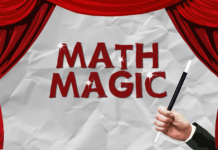 For Daily Job Alert For Daily Job Alert |
Join Our Whats App Channel |
 For Free Study Material For Free Study Material |
Join Our Telegram Channel |
Directions (1-5): Study the following information carefully and answer the given questions.
A, B, C, D, E, F, G, H, I, J, K and L are 12 players sitting in two rows, among them A, C, D, F, I and K are facing north while the remaining are facing south. Each person faces exactly one person in the other row. Each one of them won a different grand prix from among Australian Grand Prix, Azerbaijan Grand Prix, Bahrain Grand Prix, Chinese Grand Prix, Spanish Grand Prix, Monaco Grand Prix, French Grand Prix, Austrian Grand Prix, German Grand Prix, Italian Grand Prix, Russian Grand Prix and Brazilian Grand Prix (not necessarily in the same order) and each of them belongs to different country – India, Japan, Germany, Spain, Australia, China, Russia, New Zealand, Poland, Switzerland, France and Argentina (again not necessarily in the same order).
The one who won Spanish Grand Prix is from China and is facing F. None of B, L and E won Spanish Grand Prix or Australian Grand Prix. The players from Germany and Argentina are the immediate neighbours of J. B is second to the right of G, who is from Russia. B won French Grand Prix and faces the player from Switzerland, who is third to the right of D. Neither A nor D won Azerbaijan Grand Prix or from Japan. K, won the Bahrain Grand Prix, sits second to the right of the player who won Italian Grand Prix, who faces the player from Argentina, None of them sits at an extreme end. The Azerbaijan Grand Prix won by the player from France, sits as far as possible from D. L, won the Monaco Grand Prix, sits opposite the player who won the Russian Grand Prix, who is an immediate neighbour of the player sitting at an extreme end. The French Grand Prix and Chinese Grand Prix winners are from Germany and India respectively. The player who won Monaco Grand Prix and Chinese Grand Prix face the same direction. F, won the Austrian Grand Prix and from Spain, sits equidistant in the same row from the German Grand Prix and the player from Japan. The player from Poland is opposite the player from India and second to the left of the player from Spain. A, who is not won the Russian Grand Prix, is third to the left of I; and neither of them won Azerbaijan Grand Prix. H won the Brazilian Grand Prix and is third to the right of player who won Monaco Grand Prix from Australia.
Q1. Which of the following players sits at the extreme ends of one row?
a. E and B
b. A and C
c. D and C
d. G and H
e. F and D
Q2. Which of the following player belongs to Switzerland?
a. K
b. I
c. J
d. A
e. L
Q3. The one who belongs to Australia sits third to the left of ______________
a. The one who belongs to Germany
b. The one who belongs to China
c. The one who won Australian Grand Prix
d. The one who won Brazilian Grand Prix
e. The one who won Chinese Grand Prix
Q4.Who sits second to the left of J?
a. E
b. B
c. H
d. G
e. L
Q5. Which of the following combinations is true?
a. F – Austrian Grand Prix – Germany
b. H – Brazilian Grand Prix – Argentina
c. I – Italian Grand Prix – Japan
d. L – French Grand Prix – Australia
e. None of these
Directions (Q. 6-10): Study the following information carefully and answer the given questions.
A,B,C,D,E,F,P,Q,R,S,T and U are sitting in two parallel rows containing six persons in each row. Some of them facing North and some are facing south. Each person likes different subjects such as Tamil, English, Sanskrit, Maths, Physics, Chemistry, Botany, Zoology, History, Geography, Economics and Political Science.
• B is sitting second to the right of R, who is facing D, who likes Tamil. The number of persons sitting between D& S is same as between A& Q. The one who likes History is sitting immediate right of A.
• Neither D nor R is sitting at extreme ends of each row. One who likes maths is an immediate neighbour of one who likes physics. One who likes zoology is facing F. The person who like Geography and Zoology are in the same row.
• Either B or P is sitting in extreme end of the row. P is sitting second to the left of R, who is likes either Political science or History.
• S sits opposite to P and fourth to the right of one who likes Economics. F is facing the person, one who sits second to the right of A and immediate neighbour of T. U and E are in the same row. U likes maths and facing one who sitting immediate left of who likes Political science.
• B likes History. Q sits in one of the ends and E doesn’t sits in any end of the row. The person who likes Economics sits immediate right of the person who likes Botany. Those who like Sanskrit and Geography subjects facing each other. The person who likes Geography doesn’t facing U. P does not like English.
Q6. Which of the following pair represent immediate neighbours of T?
a) ED
b) DU
c) FD
d) FE
e) None of these
Q7. Who among the following sits third to the right of R?
a) B
b) P
c) one who likes zoology
d) one who likes Botany
e) Data inadequate
Q8. Four of the following five are forming a group in certain way. Which is the one that does not belong to that group?
a) Q
b) R
c) E
d) D
e) A
Q9. If Q is related to R and T is related to U then in the same way A is related to which of the following?
a) B
b) D
c) P
d) Q
e) None of this
Q10. Which of the following pair represent the persons sitting in extreme ends?
a) FS
b) TE
c) BQ
d) PB
e) None of these















